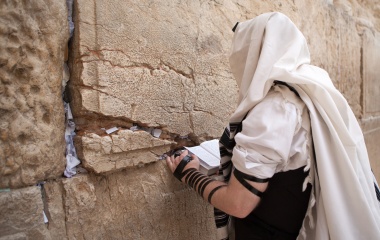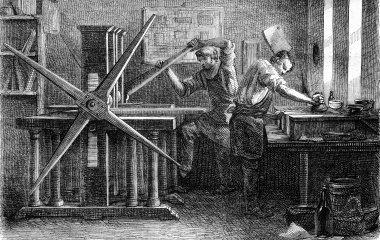
For years, one of the most anticipated dates on the Jewish calendar was Rabbi Soloveitchik’s annual teshuva derasha given during the aseret yemei teshuva. He would keep thousands spellbound for hours as he wove together halacha, aggadah, derush, and more, expounding on the Rambam’s laws of repentance. His insights—so beautifully crafted and fitted together, and unnoticed before—would seem so obvious once his masterpiece was done. Unfortunately, by the time I arrived at Yeshiva University, Rabbi Soloveitchik was in declining health and the Rav could no longer give his shiur[1]. However, in keeping with tradition (which continues to this day), the teshuva derasha is given by other leading Roshei Yeshiva.
I recall Rav Aharon Soloveitchik (the Rav’s very distinguished brother) speaking about the opening Mishnah of the sixth chapter of Yoma. “The two he-goats of Yom Kippur, it is a mitzvah that they be equal in appearance, in height, in value, and that they be taken together” (Yoma 62a). The Yom Kippur service revolved around these two goats. One was slaughtered on the Temple grounds, with its blood sprinkled in the Holy of Holies. It was, as its name implies, the “goat for G-d”. The second goat was led many kilometers away from the Temple, deep into the desert, where it was thrown off a cliff, meeting a much rougher form of death. Before it was led away, the kohen gadol would “confess” upon it “the sins of the Jewish people”. It was the goat l’azazel, carrying with it the sins of the Jewish people. Interestingly, it was this goat, and not the goat for G-d, that effected atonement[2].
The similarity of the goats—and their dissimilar fates—attested to the fine line between sinner and saint, Rav Aharon noted. In an age before the term “off the derech” was in vogue, Rav Aharon explained (to the best that my memory allows after all these years) how two people can have the same background, come from the same family, attend the same schools, look alike—even be twins—and yet one may choose the path of coming close to G-d, and one may choose a path that leads off a cliff. Man is created in the image of G-d, and we share so much with each other. Yet it is up to us to choose which of the two paths we will take.
The fate awaiting these animals was determined by a lottery, a matter of chance. The Rav himself linked our pleas for forgiveness to the concept of a lottery. The situations we face in life are often a matter of chance. The fact that we were born in the open atmosphere of America, as opposed to a shtetel in Poland, goes a long way to explain some of the sins we do. We tell G-d that this accident of birth should not be held against us[3], and that had our fate been different, so would our actions.
It is not only that people who share much can be moral polar opposites; additionally, the same action can be a great mitzvah at some times and at others a terrible sin. That which appears similar may be very different, depending on the particular context. No better example can be found than Moshe Rabbeinu who, as we read this past Shabbat, was told by G-d to hit the rock so that water should come forth. Forty years later, when faced with a similar situation, hitting the rock turned out to be a disastrous mistake. On a more personal level, it is not easy to know whether one should rebuke a friend for his misdeeds. One fears both possibilities; damaging a friendship against defending the indefensible.
While the goats had no control over their destiny, and while man is twisted and turned by factors beyond his control, Judaism teaches that, ultimately, man has free choice. We may not control what happens, but we can control our reaction to events. It is up to us whether we choose the path to azazel or to G-d.
[1] A number of these derashot are collected in Pinchas Pelis’ Al HaTeshuva, translated into English as On Repentance (the talks were actually given primarily in Yiddish).
[2] Of course, full atonement can only be achieved through teshuva, which is much more effective than any sacrifice could ever be. Such was the message of Rabbi Akiva, speaking to the generation that had witnessed the destruction of the Temple. See the concluding Mishnah in Yoma.
[3] This is the basic theme of Malcolm Gladwell’s best-selling book, Outliers, where he demonstrated that so much of our success—and failure—is due to events beyond our control. Such an approach should lead a sensitive person to a sense of humility and gratitude for what blessings have come their way.



